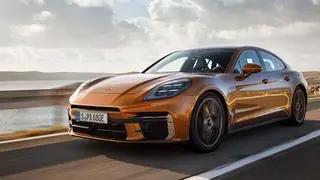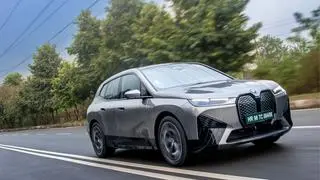The future of mobility was sealed within a battery pack many years ago. But, the last two years have been witness to some of the biggest announcements and developments in the EV business yet. There hasn’t been as much excitement surrounding this ongoing transition to electric. And this is certainly going to dramatically alter the automotive landscape around the world in the next decade, including, eventually, leading up to a whole new bunch of winners and losers.
Access to success
What are going to be the factors that influence who will win in the new age of electric mobility? The brands that will rule the road will be the ones that have access to the key ingredients that go into an EV. Legacy auto brands who haven’t been preparing themselves in time to deal with the transition are scrambling to ensure that they will have an assured supply of all key raw materials, including semi-conductors and batteries.
The pandemic and the resulting pronounced shortages in chip availability have compounded the problems for car makers across the board.
While currently it is most evident in the ICE (internal combustion engine) vehicle segment where extended waiting lists for new deliveries are a sign of the production delays that car makers have to endure, it will progressively extend to all types of vehicle manufacturers including EVs. By then, if chip and battery manufacturers can’t keep up with the growth in demand for EVs, the differentiator for brands could well be access to these key inputs. ICE carmakers who are now the overwhelming majority in the market will progressively switch to EVs.
And with the ‘power-play’ slowly shifting away from depth of experience in ICE gleaned over decades, in favour of expertise in batteries and power management, it is no wonder that the current car brands are all scrambling to stay in the race. In fact, some of the biggest legacy auto brands have recently announced plans to enter into the chip manufacturing business to secure future supplies. Most of them including Hyundai, Ford, GM and Volkswagen have already announced their transition to EVs within the next decade or so.
The European luxury car brands are in a similar situation with a clear-cut roadmap to go fully electric and hurried efforts at securing materials for their forthcoming EVs. Mercedes-Benz’s latest Vision EQXX concept, unveiled earlier this week, is an example of what is to come.
But, the coming wave of EVs from start-ups and consumer electronics companies could overshadow the developments amongst legacy auto brands. Emboldened by their familiarity and experience with common elements that tie their past to an EV future, companies like Xiaomi, Sony, Huawei have announced plans to launch their own EVs. iPhone-maker Apple is also rumoured to be working on its own EV, though there is no official word about it. The legacy auto brands outsourced design and software development; now these companies may turn the tables and outsource the hardware, while decoding the benefits of their access to the key components of EVs. Electric, connected, autonomous, and safe the big EV brands of the future may well turn out to be outside the current ICE box. Soon, Tesla will not be the only non-automotive player to hit the gravy train in the EV market.
Here are two other brands that have no history of car-making but are already set to rock the boat by launching their own EVs in the next few years.

Sony Mobility
Japanese electronics giant Sony has been the benchmark brand for many personal gadgets, home appliances and entertainment. Its foray into the smartphone market wasn’t very successful, but it has mastered the ecosystem of Lithium-ion batteries and charge management, and CMOS Sensors. After all, it was the first electronics brand to offer Li-ion batteries for its cameras and gadgets. It is also the tech leader in CMOS Sensors, the small device that has been in use in digital cameras, but will find wide application in autonomous vehicles.
After teasing its fans with the possibility of making a foray into the EV market and showcasing the Vision-S 01 prototype, earlier this week Sony has officially announced that it is setting up a separate EV company to be called ‘Sony Mobility Inc’.
The company has been extensively road testing the Vision-S 01, its first prototype. At CES 2022, Sony announced and exhibited an SUV-type prototype vehicle called Vision-S 02, as a new form factor. This vehicle uses the same EV/cloud platform as the Vision-S 01. “By offering entertainment experiences utilising the large interior space and variations of a 7-seater, this new prototype will, together with VISION-S 01, promote the accommodation of a large variety of lifestyles within a society where values are becoming increasingly diversified”, says Sony. The Vision-S 02’s system supports safe driving by recognising and analysing the surrounding environment in real time, with sensors installed around the vehicle.
These sensors include high-sensitivity, high-resolution, wide dynamic range CMOS image sensors and LiDAR sensors that accurately sense 3D space. In addition, the system provides intuitive driver interaction in conjunction with the vehicle's sound system and HMI system, so the driver can accurately judge the surrounding environment, such as the presence of emergency vehicles, even from inside the vehicle.
The Vision-S 02 e-SUV will feature ultra-thin batteries packaged onto a sort of skateboard platform. It will offer all-wheel drive using two 200kW motors for the front and rear. Top speed will be 180kmph.

Fisker Automotive
Founded by Danish car designer Henrik Fisker and his wife Geeta Gupta-Fisker, this company has only dabbled in prototypes in the past. But this year, Fisker Automotive will start deliveries of its ‘Ocean’ all-electric SUV to customers in the US and in Europe.
The company has gained expertise in developing flexible, solid-state batteries that offer higher energy density than conventional lithium-ion batteries. Based out of Los Angeles, California, this American firm is betting big on the strength of this new battery chemistry and its ability to leverage the emerging EV economy.
The contract manufacturing route
In fact, after announcing an order book of over 7,000 units, the company has added that it will have a portfolio of four EVs by 2025. Yet, given the complexities of manufacturing cars and to shorten time to market, Fisker has decided to take the contract manufacturing route instead of attempting to set up a greenfield facility. Austrian builder Magna Steyr and possibly Taiwanese electronics contract manufacturer Foxconn will be producing the vehicles for Fisker.
For the Ocean SUV, Fisker estimates that the range of the front-wheel-drive, single-motor Ocean Sport to be 400km on a single charge, using a lithium-ion phosphate battery. EPA Ranges for the all-wheel-drive, dual-motor Fisker Ocean Ultra and Fisker Ocean Extreme are estimated at 550km and 560-plus kms, respectively.
The Fisker Ocean Sport will have an expected 0-96kmph time of 6.9 seconds with peak horsepower of 275. The Fisker Ocean Ultra will have an estimated 0-96kmph time of 3.9 seconds, with an estimated peak of 540hp. The Fisker Ocean Extreme and Fisker Ocean One will have an estimated 0-96kmph time of 3.6 seconds, with an estimated peak of 550hp.








Comments
Comments have to be in English, and in full sentences. They cannot be abusive or personal. Please abide by our community guidelines for posting your comments.
We have migrated to a new commenting platform. If you are already a registered user of TheHindu Businessline and logged in, you may continue to engage with our articles. If you do not have an account please register and login to post comments. Users can access their older comments by logging into their accounts on Vuukle.